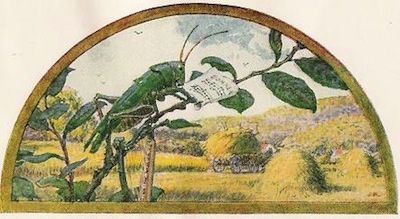1. SO (interjection). The word "so" is often used as an interjection, providing a kind of loose introduction to the sentence that does not convey a specific meaning. Instead, it just signals a nice and easy transition to get the sentence going:
- "So, you are telling me to work hard like you, Mister Ant, is that it?" asked the grasshopper.
2. SO (adverb) = ALSO. You can use "so" in a sentence with the same meaning as "also, likewise, similarly."
- The ant is a tiny insect, and so is the grasshopper.
3. SO (adverb) + adjective (THAT). A very common use of "so" is to intensify an adjective or an adverb. Here is an example with an adjective:
- The summer sun is so hot!
- The summer sun is so hot that the grasshopper rests in the shade instead of working.
- During the summer, the ant gathers food so diligently that he has enough to last all winter.
4. SO = conjunction introducing purpose clause. You can use "so" to begin a purpose clause that expresses the reason why something is done, the purpose of some action. When the "so" clause expresses purpose, you do not need a comma:
- The ant gathers food in the summer so he will have enough food for the winter.
5. SO = conjunction introducing result clause. You can also use "so" to begin a result clause, expressing the consequences of some action. This construction DOES require a comma:
- The grasshopper did not gather food in summer, so he did not have anything to eat in winter.
The comma here is very important! That is how you tell the difference between a "so" purpose clause and a "so" result clause: the purpose clause does not have a comma, but the result clause does. The presence or absence of the comma changes the meaning of the sentence.
SUMMARY: If you are using "so" as an interjection at the beginning of a sentence, you need a comma, and you also need a comma if "so" is introducing a result clause. The other uses of "so" in English do not require a comma.
